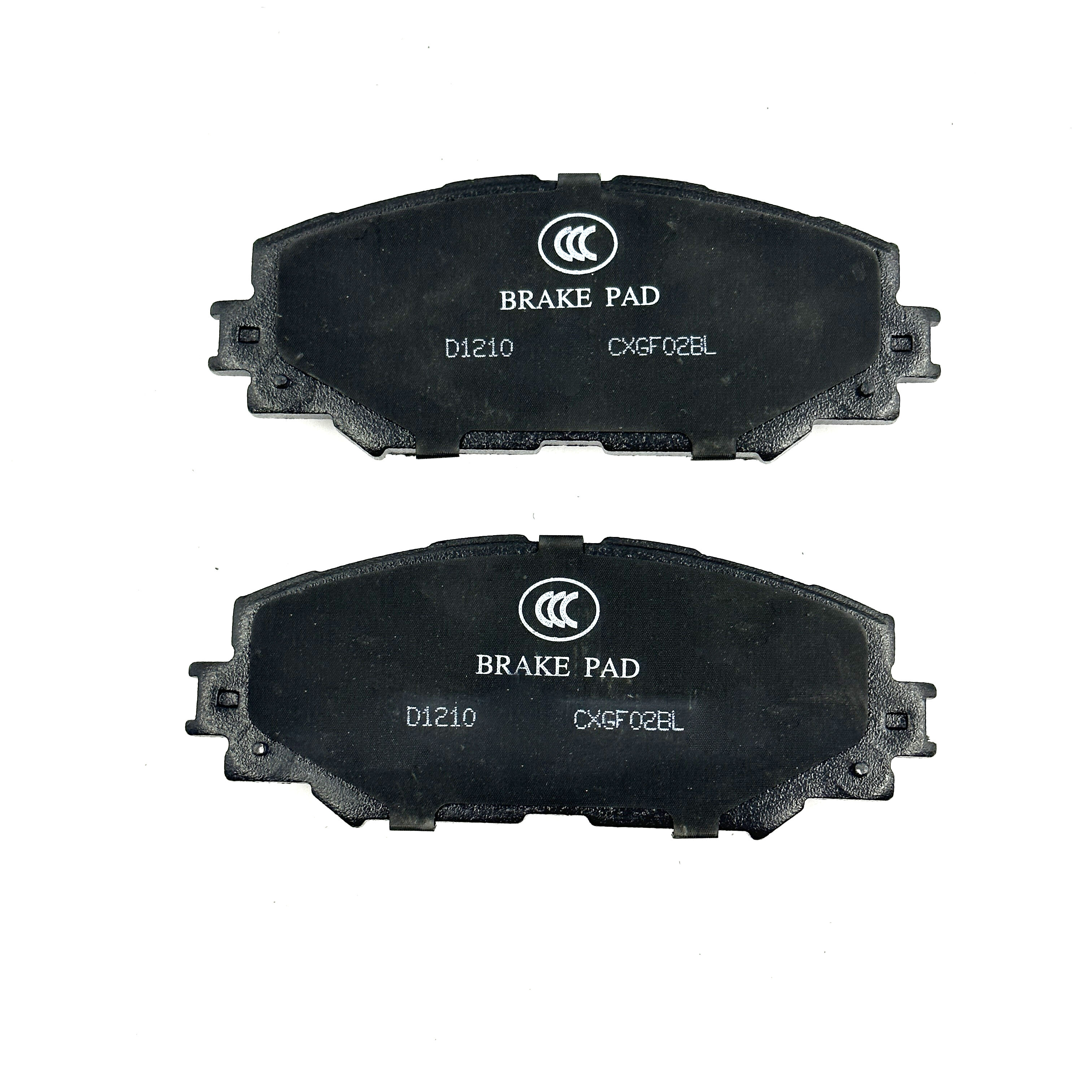How Long Do Semi-Metallic Brake Pads Last and How Can You Extend Their Life?
Semi-metallic brake pads are a popular choice for many drivers because they balance durability, performance, and affordability. But like all brake components, they wear out over time. Knowing how long semi-metallic brake pads typically last and how to make them last longer can save you money and keep your brakes working safely. Let’s break down their average lifespan and practical tips to extend it, so you get the most out of your semi-metallic brake pads.
Average Lifespan of Semi-Metallic Brake Pads
Semi-metallic brake pads usually last between 30,000 and 70,000 miles, but this range depends on several factors. Here’s why the numbers vary:
- Driving style: Aggressive drivers who brake hard, tailgate, or ride the brakes (keeping a foot on the pedal while moving) will wear out semi-metallic brake pads faster—sometimes in as little as 20,000 miles. Gentle drivers who coast to stops and avoid sudden braking can get 60,000–70,000 miles.
- Vehicle type: Heavy vehicles like trucks, SUVs, or vans put more pressure on brakes, so their semi-metallic brake pads wear faster (30,000–50,000 miles). Smaller cars, which are lighter, can get 50,000–70,000 miles.
- Environment: Driving in hilly areas (constant braking downhill) or stop-and-go city traffic increases wear, cutting lifespan by 10–20%. Highway driving, with fewer stops, is easier on semi-metallic brake pads.
- Quality of the pads: Cheap, low-quality semi-metallic brake pads with poor metal blends may wear out in 20,000–30,000 miles. High-quality ones (from brands like Bosch or Wagner) with better materials often last 50,000+ miles.
As a general rule, expect semi-metallic brake pads to last 40,000–50,000 miles for most drivers with average habits and a mid-size car.
How to Extend the Life of Semi-Metallic Brake Pads
With a few simple habits and maintenance steps, you can add thousands of miles to the life of your semi-metallic brake pads:
1. Adjust Your Driving Style
Your driving habits have the biggest impact on brake pad life. Try these tips:
- Coast to stops: When approaching a red light or stop sign, take your foot off the gas early and let the car slow down naturally. This reduces the need for hard braking.
- Avoid tailgating: Leaving more space between you and the car ahead gives you time to slow down gradually, instead of slamming on the brakes.
- Don’t ride the brakes: Resting your foot on the brake pedal (even lightly) creates constant friction, wearing pads and rotors. Keep your foot off the pedal when not braking.
- Use lower gears downhill: In hilly areas, shift to a lower gear (like “L” or “2” in automatic cars) to let the engine slow the car, reducing brake use.
2. Keep the Brake System Clean
Dirt, debris, and rust can speed up wear on semi-metallic brake pads. Regular cleaning helps:
- Remove debris: Check brake components (pads, rotors, calipers) for rocks, dirt, or mud trapped between them. Use a soft brush or compressed air to clean—debris acts like sandpaper, wearing pads faster.
- Wash off salt and chemicals: In winter, road salt and ice-melting chemicals can corrode brake parts, leading to uneven wear. Wash your car’s undercarriage and brake area every 1–2 weeks to remove salt.
- Lubricate moving parts: The caliper slides (which help pads press against rotors) can stick if dry, causing uneven pad wear. Apply brake grease (specifically for brakes) to these parts during pad replacement to keep them moving freely.

3. Maintain Proper Brake System Function
A well-maintained brake system reduces stress on semi-metallic brake pads:
- Check brake fluid: Low or dirty brake fluid can make the system work harder, increasing pad wear. Flush and replace brake fluid every 2–3 years (as per your car’s manual) to keep pressure consistent.
- Inspect rotors and calipers: Warped or uneven rotors cause semi-metallic brake pads to wear unevenly. If you feel vibrations when braking, have rotors resurfaced or replaced. Sticking calipers (which keep pads pressed against rotors) also cause rapid wear—get them fixed immediately.
- Avoid overloading your vehicle: Carrying heavy loads (too much cargo, towing beyond capacity) forces brakes to work harder. Check your car’s weight limits and stay within them to reduce pad wear.
4. Choose the Right Semi-Metallic Brake Pads for Your Needs
Not all semi-metallic brake pads are the same. Pick ones that match your vehicle and driving style:
- For heavy vehicles or towing: Choose “heavy-duty” semi-metallic brake pads with higher metal content (50–60%)—they’re more durable under stress.
- For daily driving: Opt for standard semi-metallic brake pads (30–40% metal) to balance wear and noise.
- For aggressive driving: Performance-oriented semi-metallic brake pads (40–50% metal) handle heat better, reducing fade and extending life in hard use.
Using the wrong pads (e.g., light-duty on a truck) will lead to premature wear, no matter how well you drive.
Signs Your Semi-Metallic Brake Pads Need Replacement
Even with good care, semi-metallic brake pads will wear out. Watch for these signs:
- Squealing or grinding: Most pads have a metal “wear indicator” that scrapes the rotor when pads are thin, making a high-pitched squeal. Grinding means pads are completely worn—replace immediately to avoid rotor damage.
- Reduced stopping power: If your car takes longer to stop, or the brake pedal feels soft, pads may be worn or the system needs service.
- Vibration or pulsation: This often means warped rotors, but it can also signal uneven pad wear—have both checked.
FAQ
Can semi-metallic brake pads last 100,000 miles?
It’s rare, but possible for gentle drivers with small cars in ideal conditions (mostly highway, flat roads). Most will wear out before that, but 70,000+ is achievable with good care.
Do semi-metallic brake pads wear out faster than ceramic pads?
Yes, slightly. Ceramic pads are harder and gentler on rotors, so they often last 10,000–20,000 miles longer. But semi-metallic brake pads handle heavy use better, making them a better choice for trucks or aggressive driving.
Does frequent short trips affect semi-metallic brake pad life?
Yes. Short trips mean brakes don’t get fully warmed up, leading to more moisture and rust buildup, which can speed up wear. Try to occasionally drive longer distances to let brakes dry and heat up fully.
Can I extend life by “breaking in” new semi-metallic brake pads?
Yes. New pads need 200–300 miles of gentle braking to “bed in” (form a uniform layer on rotors). Avoid hard stops during this period—poor break-in causes uneven wear and reduces lifespan.
Is it bad to drive with worn semi-metallic brake pads?
Yes. Worn pads can damage rotors (costing more to replace), reduce stopping power, and even lead to brake failure. Replace them as soon as you notice wear signs.
How much does it cost to replace semi-metallic brake pads?
Expect $150–$300 per axle (parts and labor). High-quality pads or performance models may cost more, but they often last longer, balancing the expense.
Do semi-metallic brake pads last longer in hot or cold climates?
They last slightly longer in mild climates. Extreme heat (deserts) or cold (with salt and ice) can speed up wear, but proper maintenance (cleaning, avoiding overheating) minimizes this.
Table of Contents
- How Long Do Semi-Metallic Brake Pads Last and How Can You Extend Their Life?
- Average Lifespan of Semi-Metallic Brake Pads
- How to Extend the Life of Semi-Metallic Brake Pads
- Signs Your Semi-Metallic Brake Pads Need Replacement
-
FAQ
- Can semi-metallic brake pads last 100,000 miles?
- Do semi-metallic brake pads wear out faster than ceramic pads?
- Does frequent short trips affect semi-metallic brake pad life?
- Can I extend life by “breaking in” new semi-metallic brake pads?
- Is it bad to drive with worn semi-metallic brake pads?
- How much does it cost to replace semi-metallic brake pads?
- Do semi-metallic brake pads last longer in hot or cold climates?

